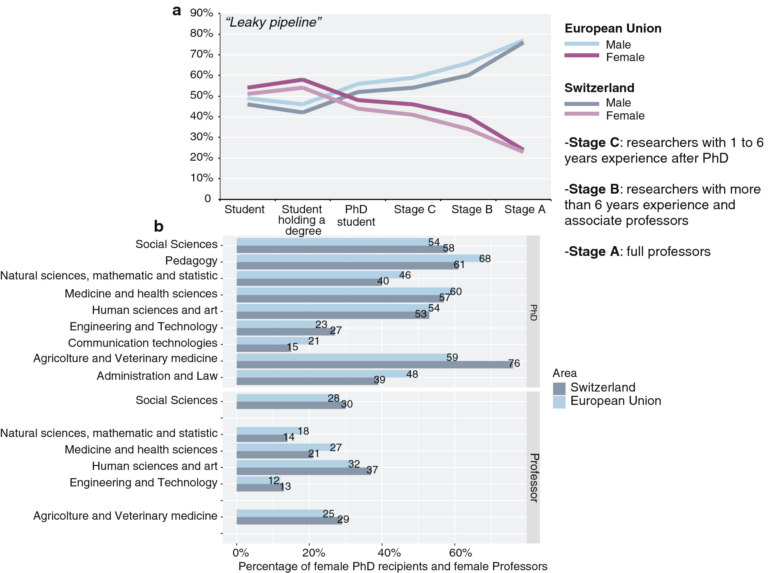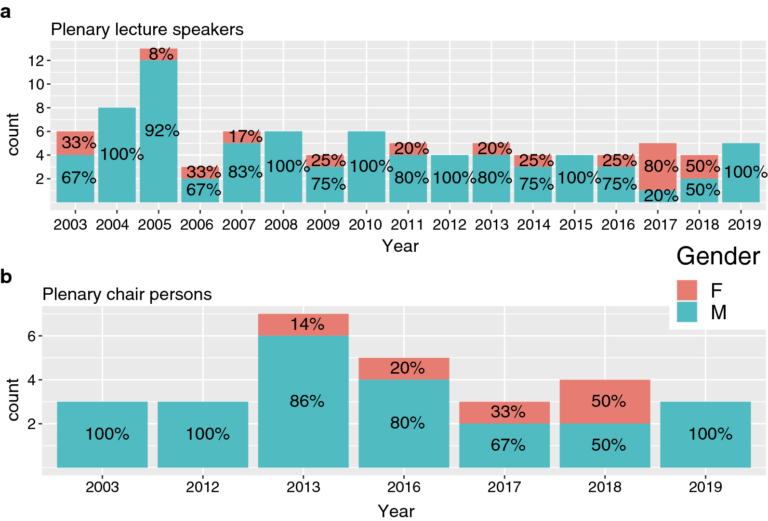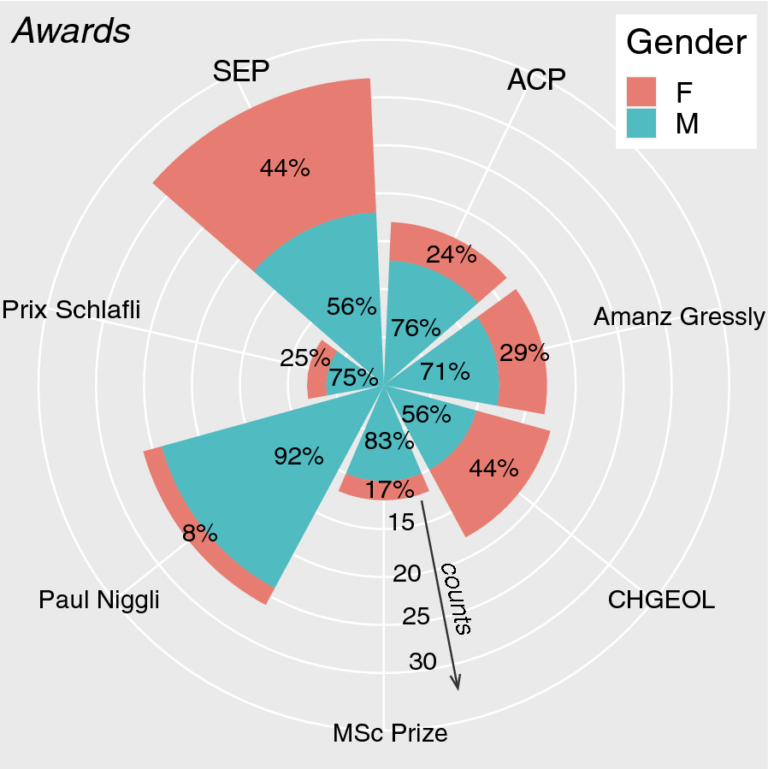Report on gender diversity and equality in the geosciences: an analysis of the Swiss Geoscience Meetings from 2003 to 2019
Fracesca Piccoli & Giulia Guidobaldi, Swiss Journal of Geosciences (2019)




Previous
Next
“A strong disparity between men and women still exists in the advanced career positions and in the representation in prominent roles in public events (e.g., plenary speakers). In particular, the organizational and conference leading positions are firmly dominated by male scientists. Moreover, a large fraction of female participants are students or PhD students, confirming the important drop out of female scientists in academia after the PhD. This suggests that particular attention has to be focused on the early stages of women academic and scientific careers.”
“Another important finding is the prominent horizontal segregation observed among geoscience disciplines (e.g., Quaternary Sciences vs. Structural Geology). This observation reveals that looking only at the total number of students and/or participants might lead to significant bias and horizontal gender segregation issues would be overlooked. The reasons why certain fields are more capable to attract and retain female scientists are yet to be understood, and further investigations at each geosciences department would be advisable (i.e., internal survey of student gender distribution among different study fields). However, considering the large student participation at the SGM, it is reasonable to think that diversifying session conveners and chair persons might be helpful to make female students feel more welcome, empowered, and overcome possible drop out.”
Click here to read the full paper
More information on the “Leaky pipeline” situation can be found on the SCNAT website and their youtube video.